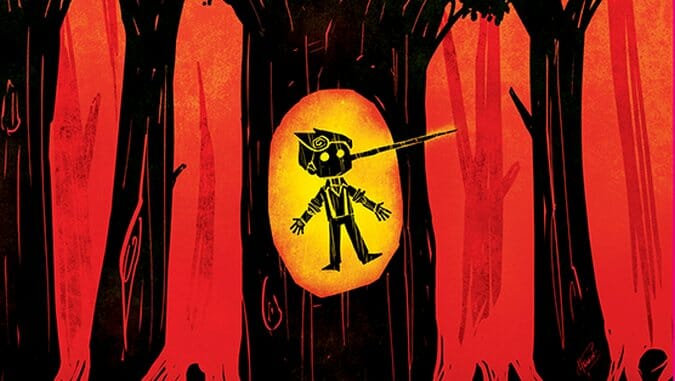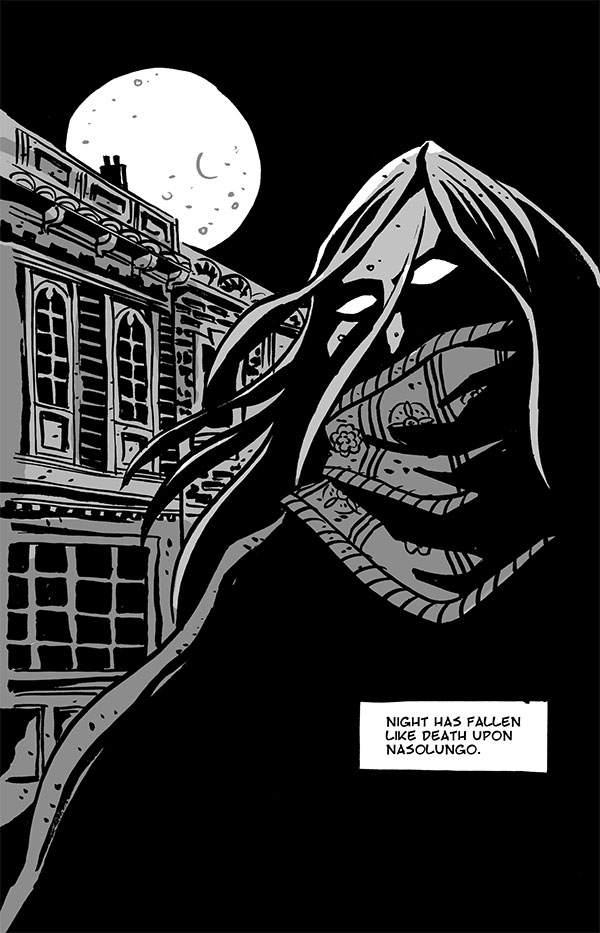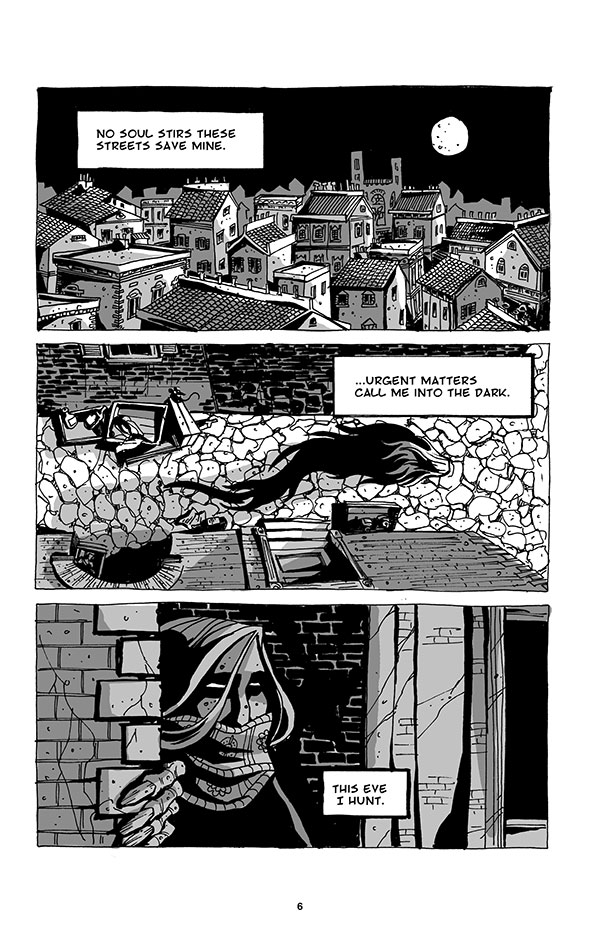Pinocchio, Vampire Slayer by Van Jensen and Dusty Higgins

Writer: Van Jensen
Artist: Dusty Higgins
Publisher: Top Shelf
Release Date: June 24, 2014
“High concept” is winning the war against star power these days, with Joss Whedon’s influence continuing to grow the on small screen, big screen and in the comics world. Who needs Brad Pitt when you’ve got Superman, and who needs Superman when you’ve got a smart and snappy idea. The idea at the heart of Pinocchio, Vampire Slayer, which compiles three earlier volumes, seems at first like a joke that could have been exhausted in the span of a few pages. Pinocchio’s made of wood. His pointy nose grows when he lies. Said nose makes a perfect weapon for staking vampires, whether accidentally (to start out with) or on purpose (later). But artist Dusty Higgins and writer Van Jensen work to assemble layers of flesh around their skeletal concept, and by the end of the third book, 500+ have passed and the characters have grown into semblances of real people.
Carlo Collodi’s original story, which is far darker and weirder than the Disney version (shocker there), provides a good bit of the inspiration, from the ghost cricket that guides Pinocchio in place of Jiminy to the four ghost rabbits that make doom-filled pronouncements to the commedia dell’ arte-style troupe of other living puppets. The book also supplies a somewhat medieval view of life as short, brutal and best spent as quickly as possible. Jensen then combines this perspective with a much more modern sensibility. The result isn’t quite the best of Buffy, but it’s better than the early monster-of-the-week episodes.
Dusty Higgins’ art translates Collodi’s metaphorical shadows into real ones, using woodcuts as inspiration in what also serves as a clever joke. His compositional skills improve markedly throughout the three books, with the final entry (“Of Wood and Blood”) including action panels that at least echo Hal Foster’s kinetic work on Tarzan with leaping characters that exude muscularity, grace and realism. The design of Pinocchio, in particular, draws attention, especially his mischievous face that becomes a vehicle for conveying emotion without dipping into cuteness or sentimentality. If there’s a weakness in the style, the flashbacks can be so lovely that the present narrative doesn’t quite hold up. In addition, some characters (small, dark, round ones clad in robes) don’t stand out from one another.


